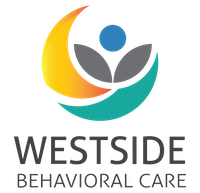Painful Shyness In Children and Adults
Painful Shyness In Children and Adults
Painful Shyness In Children and Adults
Avoidance or inhibition creates problems for the painfully shy and for those around them.
Examples of social anxiety include:
Canceling social events at the last moment
Avoiding situations that provide positive social interaction
Avoiding situations that provide positive social interaction
Few or no friends
Avoidance of activities that are otherwise pleasurable
Passivity, pessimism and low self-esteem
Friends, family members, teachers, or mentors are concerned
Excessive computer use that is not social in nature, and is without face to face contact with others
Research shows that causes of avoidance, inhibition, distress can include:
Temperament or Biological Influences
Withdrawn, avoidant, excessively emotionally reactive
Highly sensitive, when lacking adequate social support
Poor emotional “fit” with family members or some environments
Stressful Life Events
Shaming experiences
Major moves from one school or city to another
Abrupt changes or disruptions in family life
Negative Family Interactions
Frequent parental criticism and shaming to enforce behavioral compliance, high parental control with little expressed warmth
Chaotic family interactions or neglect
Stressful Work or School Environments
Highly competitive, critical, or hostile environments
Public embarrassment for poor performance
Dominance behaviors rewarded, and bullying or teasing ignored or encouraged
How loved ones, friends and mentors can help:
Maintain Appropriate Expectations
Maintain appropriate expectations while communicating empathy for the shy person’s painful emotions.
Encourage them to tell you about their daily experiences and how they feel about them.
Acknowledge the conflict between needs to belong and fears of rejection.
Role play challenging situations with the shy person.
Help the shy individual set specific, manageable behavioral goals, and agreed upon reasonable means to attain them.
Help challenge the frequent negative thoughts about the self and others, and help them develop constructive alternatives.
Avoid negative labels and intense pressures for social performance.
Remember that shyness and social anxiety are common and universal experiences at all ages for most people.
A therapist can help
Group therapy provides a place to explore, experiment, test pessimistic hypotheses about the self and social interaction, and develop adaptive interaction styles.
Successful therapy lowers barriers to action and increases appropriate risk taking and self-acceptance. Deliberate social “niche picking”, or choosing situations that suit one’s temperament, also increases.
Individual therapy provides a place to explore one’s needs, attitudes, beliefs, and behaviors without pressure from others.
Group and Individual therapy help clients develop more empathy for others and themselves by reducing negative selfthoughts, self-blame and shame while building positive perspectives and effective behavioral patterns.
Medication may help clients enter feared situations.
Prepared by:
Lynne Henderson, Ph.D., Philip Zimbardo, Ph.D., and Elaine Rodino, Ph.D.
Sponsored by/For more information:
Psychologists in Independent Practice, A Division of the American Psychological Association (APA) – www.division42.org
The Shyness Institute – www.shyness.com
©2001 Psychologists in Independent Practice, APA Division 42, and The Shyness Institute
https://www.apa.org/helpcenter/shyness.aspx
